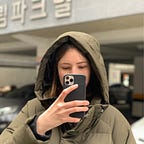Soil: The Museum.
Design an experience that explores planetary soil dependence.
Group members 🤝: Sebastian Ervi, Giada Han, Zhaolu Song, Maria Shuttleworth
<<< Previous post on Soil here: Soil: The exploration phase.
Working from last week’s findings, we wanted to explore some new ideas regarding the future of soil:
- 🏰 A soil museum
- 🏦 Soil bank
- 💬 Advertisements
- 🥘 Food menus
We thought about how the dinosaurs are so alien to us now — they existed what seems like absolutely forever ago, but we know so much about them: we have museums dedicated to them, with their skeletons on display, films about them…
We wanted to re-create this sense of fantasy we have with dinosaurs with soil — perhaps future generations might in fact feel a similar way about it once it’s gone. A future where soil is history.
Storyboards.
We each created a set of 3 storyboards, and showed each other our ideas on Zoom. After discussing, we used Invision Freehand to draw online together, combining our ideas into 3 final storyboards to use for Speed Dating.
The Soil Museum.
The Food Menu.
The Soil Bank.
Speed Dating.
For this next research method we each interviewed a few people and asked questions about each storyboard:
- How effective would this experience be in terms of understanding the value of soil?
- How would you act in this situation?
- How does this raise your awareness of soil? What would you change?
After we all got our results we hopped back onto a zoom call and compared notes. Out of our 7 interviews, 3 votes were for the Bank, and 3 were for the Museum.
Menu: “Didn’t raise my awareness as there was no direct comparison to the food grown with soil — this needs to be highlighted to be more effective”.
Museum: “Until I saw this I didn’t know that there were ways that soil could be damaged beyond repair”.
Bank: “It literally equates soil to money, so it’s quite effective in making me value soil”.
We decided to try and combine the two as they seemed to be the most effective at raising people’s awareness of soil.
The next step was to create an experience for the Soil Museum, whilst including the Bank as a part of its history. We begun by creating a organising the events for our experience in class, starting with a timeline.
We initially wanted to set the museum in the year 3020, so it could be a distant, distant memory. Our course leader suggested moving the date closer so people could to relate to the situation more. So, we moved it to 2300.
World building.
Gift shop.
Needing to fill up a gift shop with products, we did the Crazy 8’s research method to brainstorm. This is what we came up with…
- 💰 Soil souvenir coin
- 📖 Soil book
- 💸 Monopoly: soil edition
- 🧴Dirt/earth perfume
- 🐚 Fossil
- 🥿 Soil slippers
- 💼 Posters, tote bags
- 🧸 Plush toy
- ⛰ Pet soil (pet rock)
We divided up our ideas and got to work.
We met up the day before class to print everything, and to put the finishing touches on our physical creations. Having set up the experience to test it out, Tanvi from the previous cohort kindly came to have a look and tell us what she thought. She commented that our experience was like a Diegetic Prototype (a design made to be self-explanatory of the world they come from).
Doomsday.
The day we’ve been waiting for! We arrived early and set up the museum in the storage cupboard next to our classroom — surprisingly, the perfect size. We set up some relaxing/eerie music, and blocked out the light coming from outside the room. Then, we put the gift shop back in our classroom, separating the two experiences like it would be in a real museum.
Above is a video of the experience, taken and edited by Sebastian 🙌🏻
Feedback.
Most people seemed to really like it, noting that it was very immersive.
John suggested that we could have made it more like a museum, as it came off as a gallery-esque type of thing. He also commented that if our experience would have just been the museum without the gift shop, it would have been a bit too surface-level. So, ideally, if we could go back and do the project again we would have liked to build on the museum experience more. I’d have also liked to make the museum part more visual, or auditory, rather than simply reading-based — perhaps have a video explaining the history of soil instead of a sheet of paper, for example.
Finally, there was a bit of confusion surrounding the soil bank and its history. Next time I would like us to think through this more thoroughly, bringing it more into the timeline.
Next project on Reading in my next post: >>>
References.
- Ardern, J., 2019. Mitigation of Shock. Superflux. Available at: https://superflux.in/index.php/work/mitigation-of-shock/ (Accessed: 10 December 2020).
- European Commission, 2010. The Factory of Life: Why Soil Biodiversity is So Important. Luxembourg: Office for Official Publications of the European Union.
- Li, G., Sun, G., Ren, Y., Luo, X. and Zhu, Y., 2018. Urban soil and human health: a review. European Journal of Soil Science, 69(1), 196–215.
- WWF, 2018. Soil, The Indispensable Dirt. Medium. Available at: https://medium.com/wwftogetherpossible/soil-the-indispensable-dirt-c1f2314efc38 (Accessed: 10 December 2020).
